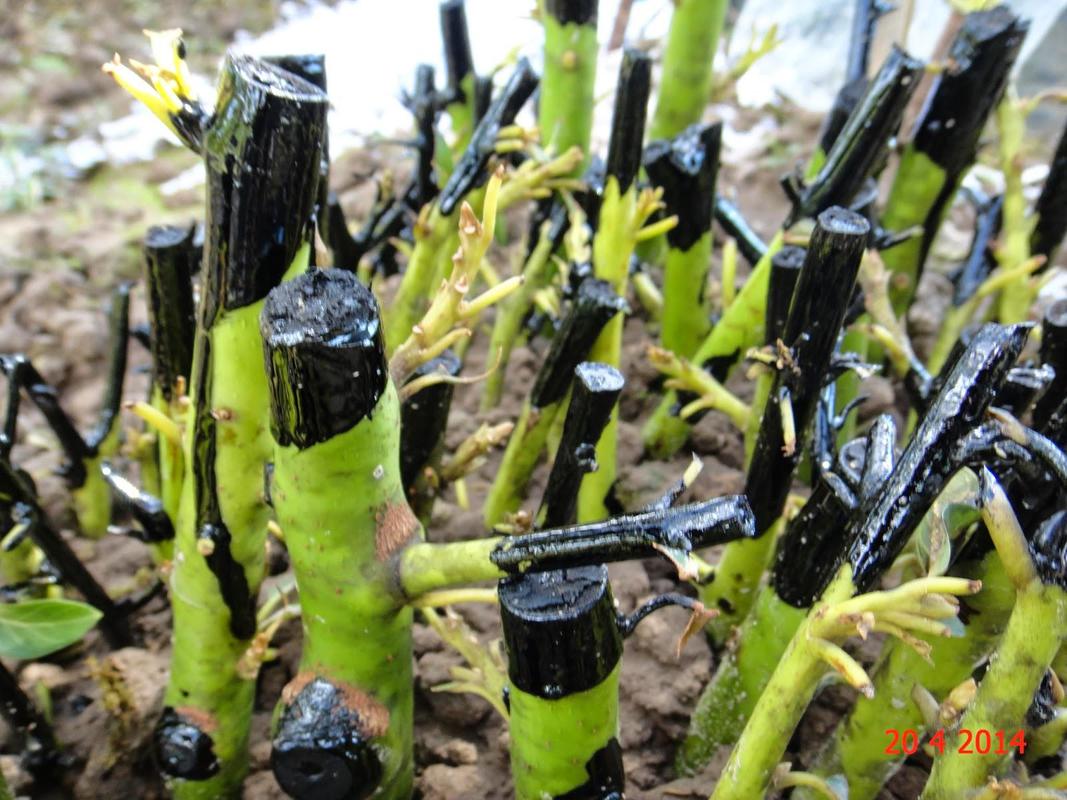Get familiar with AvocadoAvocado is a tree crop whose origin has been traced to South Central Mexico. It is a flowering plant which is classified to belong to the family Lauraceae and contain as much 160 grams calories, total carbohydrate of 9 grams, a protein estimate of 4 grams and fat composition of 15 grams per every 100 gram of the crop. This shows how rich the plant is nutritionally. It is arguably the fruit with the greatest protein content with its four grams of protein, and although there has been a wide argument about whether they are fruits or vegetables, they have been scientifically proven to be fruits. There are also other fun facts about avocados which include that they are baby friendly, fiber rich, they lower bad cholesterol, upgrade dip and spreads, usually referred to as an anti-ageing powerhouse and possess a natural packaging. Avocado trees do not self-pollinate and hence they need another avocado tree around to help their pollination process.
This explains why northern gardeners need to learn the planting of avocado as houseplant such that they could enjoy their fruits at home. Concerns with growing of Avocado indoor There has been questions about the indoor growth of avocado courtesy of its height as a tree crop. The plant can grow as high as 80 feet in height. In the United States, most tree crops do poorly when the freezing weather and cold season emerge. Gardeners have therefore being worried about growth of the crop and have always asked been careful of growing the crop as an outdoor crop. They have therefore always asked if it can be grown in homes and the answer is simply yes. This is because there are several dwarf varieties of the crop which can produce as much as the tall ones at home in both the cold and temperate seasons. All about Growing AvocadoesGrowing Avocado inside a container Growing avocado indoors is quite simple and easy. Starting with cultivation in containers, sprouted pit will be moved to an unglazed terracotta pot of at least 10 inches both across and twice as deep as the roots. A potting mix with compost blended sand is recommended for a loose fast draining composition.
When the planting is done in containers, you are not supposed to expect fruits as this can take a lot of years (around ten years) to get to the fruiting stage. If you luckily get fruits from them at earlier stages, the flavor will never be good as those commercially produced from rootstocks. Caring for indoor avocado A rich and fast-draining mix is ideal for avocado growth. It is a plant that thrive in full sun like banana. When you are starting from a seed, you could keep them on a bright windowsill until the first sets of leaves and roots form from it. For a better chance at fruiting, you have to purchase a dwarf tree that has been grafted directly onto rootstock. The choice of rootstock as in any propagation is to increase the best trait of the plant such that it would be stronger and more resistant to a variety of diseases and environmental influences. Care of indoor avocado plant especially include support and feeding. Stakes are used to train the stem to become sturdy and straight as it grows. Ensure to transplant the tree the moment you see it is outgrowing the pot. Also endeavor to prune off any suckers that arise from the rootstock. Fertilization is done with water soluble food monthly. While this is done, try to turn the tree frequently such that growth is evenly promoted. Fertilization could also be done with fish emulsion in every month of the first year. Avocado doesn’t play with water. Therefore whenever you feel the dry to the touch of the soil, give the plant moderate water. Yellowing of leaves in avocado are usually signs of too much water resulting from flushing off of fertilizer salt from the soil. Propagation of Avocado
After this, the container should be kept in a warm place but not under direct sunlight. The seed should be expected to sprout between two to six weeks. The young plant should be left to grow to up to six inches such that the plant will have a stronger root. The plant could be transferred to a pot which soil has been readied after the new leaves have emerged on plant. Repotting From this point, avocado could be grown in another pot when it begins to grow again. You would ensure a good trimming routine on the plant for the first few years, and this is done to encourage a bushy avocado. First intense trimming should begin when the plant reaches the height of 12 inches. It should be trimmed back to 6 inches at this time and allowed to grow new leaves and from new stems. As the plant gets taller, continue to pinch off the new growth during the summer to favor new outgrowth. This is because avocado fruits from new generation.
Varieties of avocado You have got as much as 1000 varieties of the crop to pick from. However, the one that is most likely to find its way into your home is the Haas avocado, and it is tremendously grown in California and perhaps throughout the Latin America. This variety is a small and pebbly avocados having high fat content as well as delicious flesh. The lighter green Florida variety is also a good one as they have less fat and are usually publicized as health-conscious avocado. Disease Care Avocado are usually affected by canker, fruit rot, root rot, sunblotch as well as wilt and blight. All of these however have specialized ways in which they are treated they are also affected by insects such as borer, caterpillars, Lace bugs, mites and Thrips. All of these have different part of the plant which they feed on to render the plant less productive. My advice on prevention and prevention of dieses and insects is to consult professionals. Scientific development in avocado production It is reported that much more researches have been done and continued in developing cold tolerant avocado. This will also assist in getting more avocado to the people as well as allow gardeners to plant any time of the year. Avocado is simply one of those fruits you can plants and have in your own reach all year round when you plant them indoor. You have the necessary steps to follow. Yours is to try.
0 Comments
Leave a Reply. |
GROW ORGANIC!
|
|





 RSS Feed
RSS Feed




